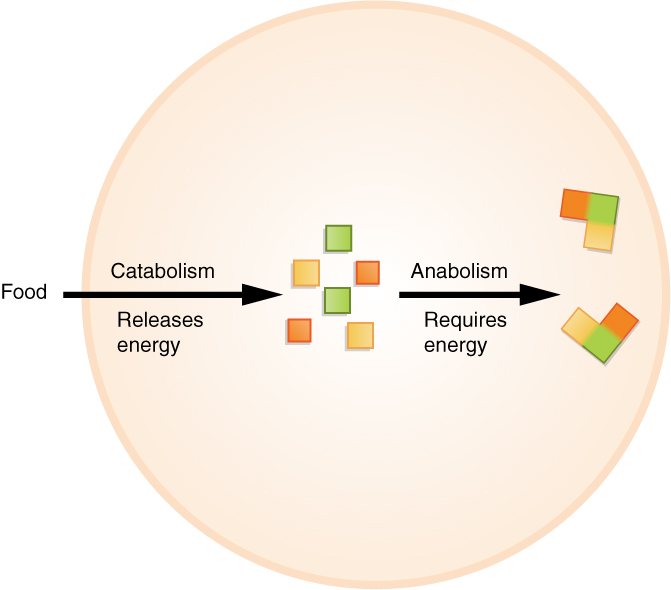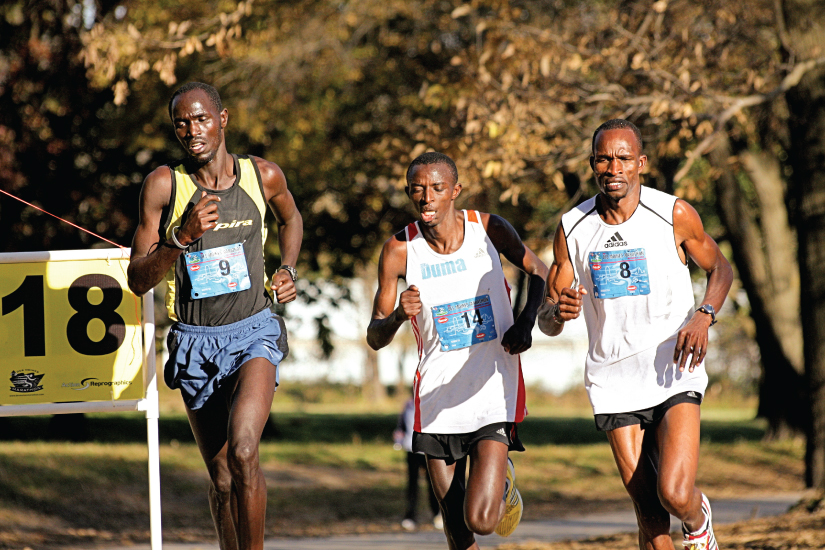| << Chapter < Page | Chapter >> Page > |

Every cell in your body makes use of a chemical compound, adenosine triphosphate (ATP) , to store and release energy. Think of ATP as the energy "currency" of the cell. If energy is needed for something to happen in the cell, then ATP is used to "pay the energy bill". The cell stores energy in the synthesis (anabolism) of ATP, then moves the ATP molecules to the location where energy is needed to fuel cellular activities. Then the ATP is broken down (catabolism) and a controlled amount of energy is released, which is used by the cell to perform a particular job.
Responsiveness is the ability of an organism to adjust to changes in its internal and external environments. An example of responsiveness to external stimuli could include moving toward sources of food and water and away from perceived dangers. Changes in an organism’s internal environment, such as increased body temperature, can cause the responses of sweating and the dilation of blood vessels in the skin in order to decrease body temperature, as shown by the runners in [link] .
To function properly, cells require appropriate conditions such as proper temperature, pH, and concentrations of diverse chemicals. These conditions may, however, change from one moment to the next. Organisms are able to maintain internal conditions within a narrow range almost constantly, despite environmental changes, through a process called homeostasis or “steady state”—the ability of an organism to maintain constant internal conditions. For example, many organisms regulate their body temperature in a process known as thermoregulation. Organisms that live in cold climates, such as the polar bear, have body structures that help them withstand low temperatures and conserve body heat. In hot climates, organisms have methods (such as perspiration in humans or panting in dogs) that help them to shed excess body heat. As we discuss organ systems, the concept of homeostasis will be critically important to remember.
All living organisms exhibit a “fit” to their environment. Biologists refer to this fit as adaptation and it is a consequence of evolution by natural selection (i.e. survival of the fittest), which operates in every lineage of reproducing organisms. Examples of adaptations are diverse and unique, from heat-resistant bacteria that live in boiling hot springs to the tongue length of a nectar-feeding moth that matches the size of the flower from which it feeds. All adaptations enhance the reproductive potential of the individual exhibiting them, including their ability to survive to reproduce. Adaptations are not constant. As an environment changes, natural selection causes the characteristics of the individuals in a population to track those changes.
Human movement includes not only actions at the joints of the body, but also the motion of individual organs and even individual cells. As you read these words, red and white blood cells are moving throughout your body, muscle cells are contracting and relaxing to maintain your posture and to focus your vision, and glands are secreting chemicals to regulate body functions. Your body is coordinating the action of entire muscle groups to enable you to move air into and out of your lungs, to push blood throughout your body, and to propel the food you have eaten through your digestive tract. Consciously, of course, you contract your skeletal muscles to move the bones of your skeleton to get from one place to another (as the runners are doing in [link] ), and to carry out all of the activities of your daily life.

Development is all of the changes the body goes through in life. Development includes the processes of differentiation, growth, and renewal.
Growth is the increase in body size. Humans, like all multicellular organisms, grow by increasing the number of existing cells, increasing the amount of non-cellular material around cells (such as mineral deposits in bone), and, within very narrow limits, increasing the size of existing cells.
Reproduction is the formation of a new organism from parent organisms. In humans, reproduction is carried out by the male and female reproductive systems. Because death will come to all complex organisms, without reproduction, the line of organisms would end.
Most processes that occur in the human body are not consciously controlled. They occur continuously to build, maintain, and sustain life. These processes include: organization, in terms of the maintenance of essential body boundaries; metabolism, including energy transfer via anabolic and catabolic reactions; responsiveness; homeostasis; adaptation; movement; and growth, differentiation, reproduction, and renewal.
View this animation to learn more about metabolic processes. What kind of catabolism occurs in the heart?
Fatty acid catabolism.

Notification Switch
Would you like to follow the 'Human biology' conversation and receive update notifications?